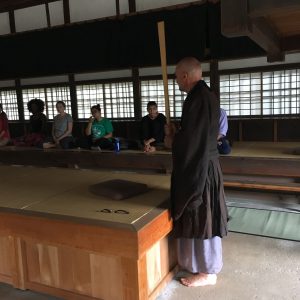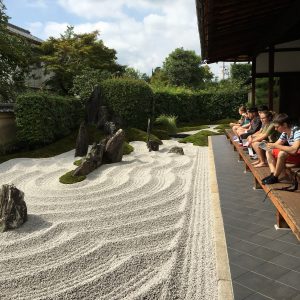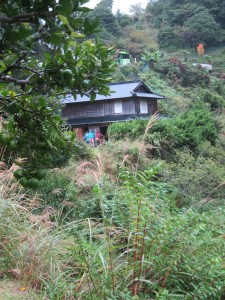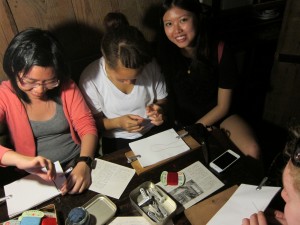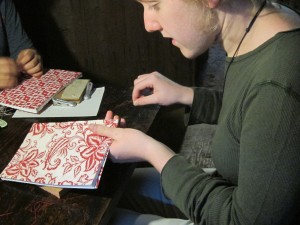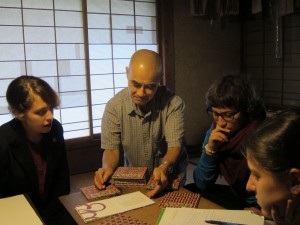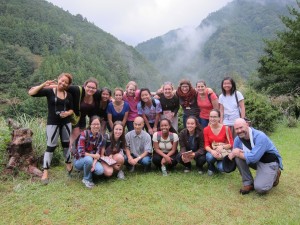We walked as pilgrims on the Kumano Kodo on our way into Kyoto, and trekked from Myoshin-ji to Kyoto through to Osaka, changing stations there, and are now at last on the train to Mount Koya, a Buddhist enclave up in the mountains. Pilgrims again, everything we own on our backs, trying not to lose the trail, threading our way through the commuter rush instead of through the cedar forests.
In Kyoto we walked a lot, but we came here to learn to sit, to practice zazen. We stayed at the Shunko-in temple in the large complex on the outskirts of Kyoto, Myoshin-ji. On Saturday morning, we did a meditation training session in English with the vice abbot of the temple, Rev, Taka Kawakami. He talked about flexibility as a state of mind, reflected in the body. Stiff when you get up off the meditation cushion? It’s ok to sit in a chair. Be flexible. He spoke a bit about the intersection between neuroscience, psychology and Buddhist practice – perfect for this 360 which sits at that intersection point as well. There was a fun moment of connection when he referred to a longitudinal study, The Harvard Study of Adult Development, on which Marc Schulz is a co-investigator (and has a new paper out this week!) and one of the 360 students is using data from for her thesis.
From Shunko-in we went to Tenryu-ji, a 14th century Zen training monastery set in a historic garden (now a UNESCO world heritage site). There we met with Thomas Yuho Kirchner, an American and Zen monk who entered Shofuko-ji monastery in 1971. He gave us an introduction to the monastic schedule, and the training young monks would be given. We practiced zazen, sitting meditation, in the hall where the monks in training would practice, eat and sleep, wrapped in thick square futons.
Attention could drift during long meditation sessions, and so the kaisaku was employed, a flat stick whacked across the shoulder blades, sometimes called the stick of compassion. Thomas Kirchner demonstrated its use on me. You bow to each other, then cross your arms and round your back for two quick slaps on each shoulder. It stings, sharpening your senses and much like a deep massage, refreshes. In my course we’ll talk a bit about the relationship between pain and contemplative practice. It’s a fascinating topic, criss-crossing psychology and spirituality.
On Sunday we visited another large temple complex, Daitoku-ji, to tour Daisin-in and do a last meditation training before heading to Kyosan. The iconic Zen dry rock gardens, and nightingale floors – which squeak as you walk on them, were highlights of this temple. We also toured Zuiho-in, which I think might have my favorite rock garden, one with deep standing waves.
____________
A bit about Prof. Schulz’ paper: http://campaign.r20.constantcontact.com/render?m=1102398051702&ca=1a06f66e-a651-4127-bdf3-a5a2b4ab01ed



